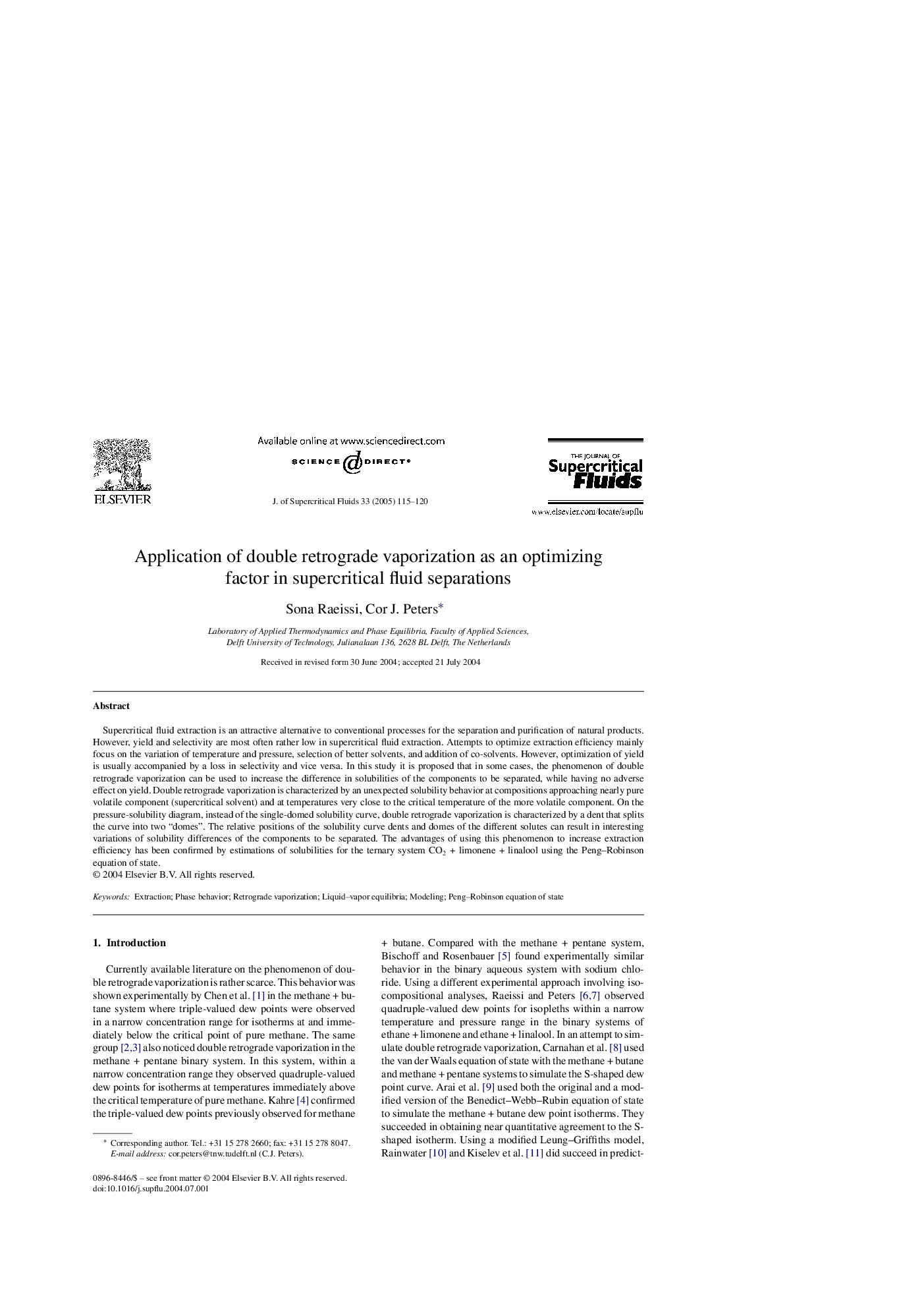| Article ID | Journal | Published Year | Pages | File Type |
|---|---|---|---|---|
| 9635854 | The Journal of Supercritical Fluids | 2005 | 6 Pages |
Abstract
Supercritical fluid extraction is an attractive alternative to conventional processes for the separation and purification of natural products. However, yield and selectivity are most often rather low in supercritical fluid extraction. Attempts to optimize extraction efficiency mainly focus on the variation of temperature and pressure, selection of better solvents, and addition of co-solvents. However, optimization of yield is usually accompanied by a loss in selectivity and vice versa. In this study it is proposed that in some cases, the phenomenon of double retrograde vaporization can be used to increase the difference in solubilities of the components to be separated, while having no adverse effect on yield. Double retrograde vaporization is characterized by an unexpected solubility behavior at compositions approaching nearly pure volatile component (supercritical solvent) and at temperatures very close to the critical temperature of the more volatile component. On the pressure-solubility diagram, instead of the single-domed solubility curve, double retrograde vaporization is characterized by a dent that splits the curve into two “domes”. The relative positions of the solubility curve dents and domes of the different solutes can result in interesting variations of solubility differences of the components to be separated. The advantages of using this phenomenon to increase extraction efficiency has been confirmed by estimations of solubilities for the ternary system CO2 + limonene + linalool using the Peng-Robinson equation of state.
Related Topics
Physical Sciences and Engineering
Chemical Engineering
Chemical Engineering (General)
Authors
Sona Raeissi, Cor J. Peters,
